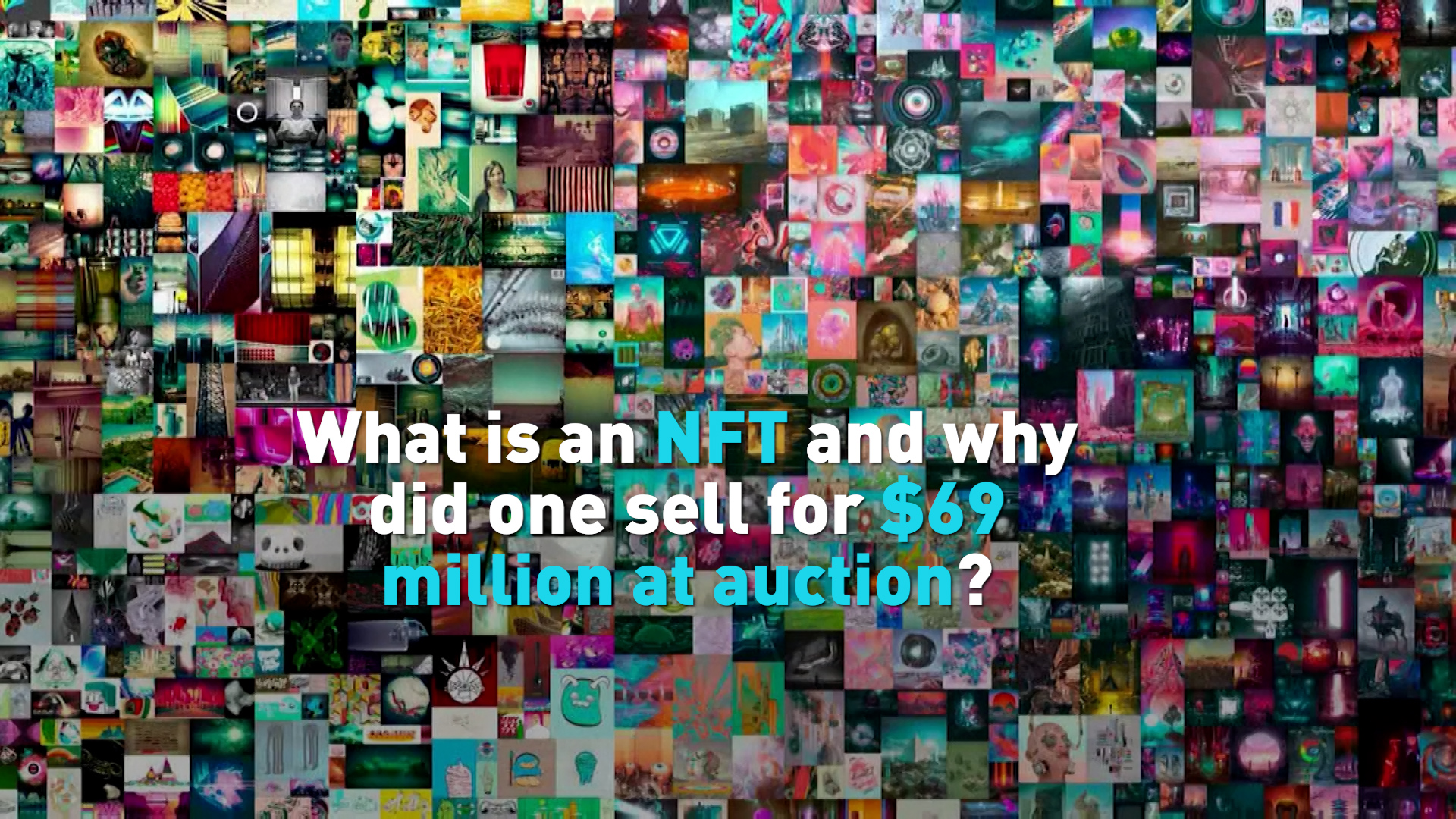On Thursday, a collage created by artist Beeple, real name Mike Winkelmann, sold for $69.3 million at the New York Christie's auction house, the third highest ever sale for a living artist.
What makes this sale so different, is that the collage, title “Everydays: The First 5000 Days” is completely digital, called an NFT, or a “non-fungible token.” Similar cryptocurrencies like Bitcoin, NFT let people claim ownership on specific digital files.
“Digital arts did not start with NFT’s,” Beeple told Reuters. And while digital artists and makers can be found in different fields from web design to animation, before the popularity of NFTs, “there was no way to collect that work before.”
01:50

What is a Non-Fungible Token (NFTs)?
NFTs are cryptographic assets that is verified with blockchain technology for specific versions of any digital file. While the technology has been around since the mid-2010s, it hit mainstream popularity in 2017.
Unlike Bitcoin and other cryptocurrencies, however, NFT’s can’t be traded, replicated or exchanged at equivalency. Instead, the NFT is bought and sold like physical object.
People “mint” NFTs, creating a record of ownership that spreads across computer networks and can’t be changed by anyone except the owner.
NFTs can be “tokenized” to create a digital certificate of ownership that can be bought and sold in digital marketplaces.
What’s behind the popularity in NFTs?
Art is not the only thing shaking up the NFT markets, as sport trading cards have been making an impact on the market.
NFT’s have been on the rise thanks to the recent boom in cryptocurrencies – bitcoin saw prices balloon to up to $56,000, while major companies like Tesla and Goldman Sachs are looking to invest.
In October, the National Basketball Association has partnered with blockchain company Dapper Labs, to make digital versions of highlights from games.
A Lebron James highlight sold for $200,000 and some asking prices are as high as $240,000.
An art collector bough an NFT for a 10-second video made by Beeple for $67,000 in October before selling it in March for $6.6 million. Christie's had sold a digital NFT for $130,000 in October.
Is it a good time to invest in NFTs?
Data suggests that the NFT market is growing rapidly, with the NFT Report 2020 saying the market grew by 299% in 2020.
Investors are cautious about the assets, fearing that the market could be a bubble despite big spending. There are concerns that the investments are at risk of major losses if the hype dies down, while there are possible threats of fraud in marke places.
There are also environmental concerns related to the amount of electricity and the carbon footprint used by computers in “minting” NFTs.

